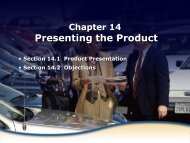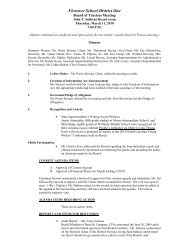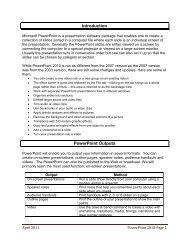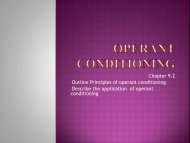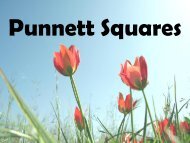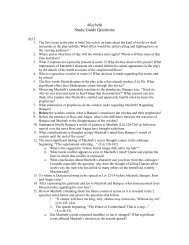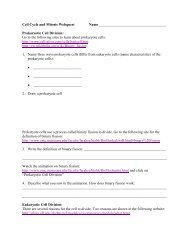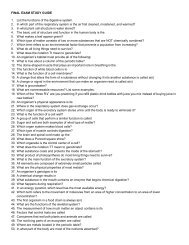PS-3.1 Distinguish chemical properties of matter (including reactivity ...
PS-3.1 Distinguish chemical properties of matter (including reactivity ...
PS-3.1 Distinguish chemical properties of matter (including reactivity ...
You also want an ePaper? Increase the reach of your titles
YUMPU automatically turns print PDFs into web optimized ePapers that Google loves.
Properties and Classifications <strong>of</strong> Matter<strong>PS</strong>-3.2 Infer the practical applications <strong>of</strong> organic and inorganic substances on the basis <strong>of</strong>their <strong>chemical</strong> and physical <strong>properties</strong>.Select the best substance for a particular function when given a list <strong>of</strong> the substance’s <strong>chemical</strong> and physical<strong>properties</strong>. All organic substances are compounds that contain carbon, and that inorganic substances are elements orcompounds (that do not necessarily contain carbon).Organic Substances The functions <strong>of</strong> substances depend on their <strong>properties</strong>. Recall the names <strong>of</strong> selected types <strong>of</strong> organicbiological molecules and summarize how their functions in organisms are dictated by their <strong>chemical</strong><strong>properties</strong>. Examples include:○ Protein molecules are long chains <strong>of</strong> small units (amino acid monomers) that are arranged in variousconfigurations so they can form a wide variety <strong>of</strong> molecules. Proteins serve many varied functions inliving organisms such as catalysts (enzymes) and tissue building.○ Carbohydrate molecules (sugars and starches) provide organisms with energy when they break downinto smaller molecules.○ Lipid molecules (fats and oils) are good sources <strong>of</strong> stored energy because lipids produce more energyper gram than carbohydrates. Hydrocarbons are a class <strong>of</strong> organic molecules composed <strong>of</strong> the elements carbon and hydrogen. Carbon andhydrogen can combine to make thousands <strong>of</strong> different hydrocarbon compounds.○ Many hydrocarbons are combustible so they are used for fuel, <strong>including</strong> gasoline, kerosene, jet fuel, anddiesel oil.○ Many hydrocarbons form long chain molecules called polymers so they are used to make plastics andsynthetic fibers.Inorganic Substances Recognize potential uses <strong>of</strong> inorganic substances when given the <strong>properties</strong> <strong>of</strong> the substance. Examplesinclude:○ Copper is ductile and conducts electricity, so it is used in wiring.○ Aluminum has a low density compared to substances with similar strength, so it is used in makingairplanes.○ Water is a good solvent for many compounds, so it is used to wash clothes.○ Argon is an inert/stable gas that will not react with the filament, so it is used in light bulbs.<strong>PS</strong>-3.3 Illustrate the difference between a molecule and an atom.Elements are composed <strong>of</strong> only one type <strong>of</strong> atom.An atom is the smallest unit <strong>of</strong> an element that can be involved in a <strong>chemical</strong> reaction.All <strong>of</strong> the elements are listed on the periodic table.Molecular substances are composed <strong>of</strong> two or more atoms covalently bonded together to make units calledmolecules.A molecule is the smallest particle <strong>of</strong> a molecular substance that can exist and still have the composition and<strong>chemical</strong> <strong>properties</strong> <strong>of</strong> the substance.3 / 10







